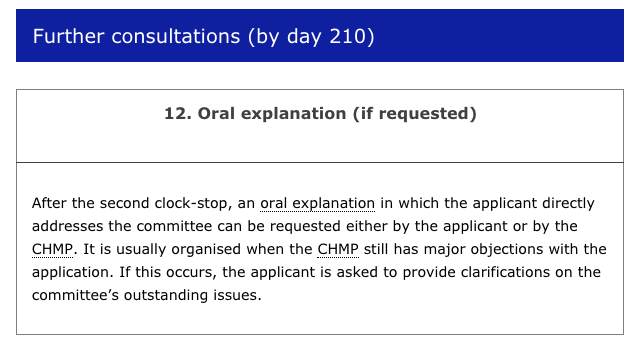
New data for the Oxford/AstraZeneca vaccine, with extra month's worth of data, & combining 4 trials from phase 1 to 3, focusing on 1st dose: Indian phase 2/3 trial still not included. 332 events... 1/n papers.ssrn.com/sol3/papers.cf… (Preprint) (TY to the people who alerted me to it)
...Includes 2 phase 1/2 trials in UK & South Africa (2 in Japan & Kenya not included); phase 2/3 trial in the UK (phase 2/3 in India not included); & phase 3 in Brazil. A mixture of trials with & without primary efficacy endpoints. (US phase 3 trial still not this far)...2/n 

...New analysis includes a range of non-standardized doses, including accidental low-dose group, with comparison mostly a meningococcal vaccine (Brazil, placebo 2nd shot). For the trials which were originally single shot trials, people were offered the 2nd: not all agreed...3/n 

..Analyses for single dose not in protocol: requested by regulators, policy-makers. 7,000+ people excluded, mostly not 15 days since dose 2; few hundred not confirmed seronegative for SARS-Cov-2 at start or infected before the 15 days; 700+ not in efficacy cohort (mostly UK)..4/n 



...They include accidental low-dose group, which EMA doesn't (as standard dose authorized for use), so efficacy rates a little higher than EMA:
Original November data: 62·1% (CI 41·0–75·7)
New December data: 66.7% (CI 57.4-74.0%)
...5/n
Original November data: 62·1% (CI 41·0–75·7)
New December data: 66.7% (CI 57.4-74.0%)
...5/n
...Still no people hospitalized with Covid-19 15 days after 2nd shot vs 15 in control groups. (That doesn't include people with single shot only - the group that refused the 2nd shot - but presumably they'd have reported any hospitalization?)...6/n 

...Switching now to data on the standard dose. Efficacy was 63.1% (51.8%-71.7%) (74 vs 197 events). In the UK group (only data), standard dose didn't reduce asymptomatic infection...7/n
...Now to single dose data. 2,752 didn’t have a 2nd shot (480 of them had low dose); 61% from Brazilian trial; more likely to be a health/social care worker; female; a bit younger; less likely to be person of color. 19,150 had the 2nd shot...8/n (replacement for unclear tweet)
..As the authors say, there are "potential for multiple sources of bias" in the single dose model (on top of multiple sources of bias in the trials themselves & the exclusion of other trials from the analyses). It's an extra layer of unmeasurable uncertainty to keep in mind...9/n
...The single dose modeling is a subgroup, but a large one. They include analysis for standard dose only (which is good - figure shown). However the subgroup with standard & no booster or booster after 90 days is <5,000 people by my calculation...10/n 

...Their conclusion: "A single standard dose of vaccine provided protection against primary symptomatic COVID-19 in the first 90 days of 76%, (95%CI, 59%, 86%), but did not provide protection against asymptomatic infection in the same period (VE 16%, 95% CI - 88%, 62%)"...11/n
...They conclude "no evidence of significant waning of protection" in the 90 days after a 1st shot, but not clear how long protection after a single dose would hold. They now agree with the MHRA position on the low-dose hypothesis (that it was more related to interval) ...12/n
...I think we're essentially in the same place as we were before these data - but with narrower, but still wide, confidence intervals, plus the levels of uncertainty about un-pre-specified subgroup analyses & other problems with these trials...13/n
...No analysis of variants. On methods: all single-blind trials, except the phase 1/2 trial from South Africa. They had decided the trials were sufficiently similar to pool the results, but no sensitivity analyses &c on this. /14
PS this time comes from reminder by @Maneesh312: Indian phase 2/3 trial register entry lists only immunogenicity & safety outcomes: no efficacy cohort ctri.nic.in/Clinicaltrials… OTOH, Covid-19 also a safety outcome (because of monitoring for VAERD). It needs to be reported.
...Followup on Oxford/AstraZeneca vaccine results (oh I hope it gets an actual name soon!!!) Getting questions by people bewildered by headlines like this ⬇️, when I'd tweeted that results showed standard dose didn't prevent asymptomatic infection... 

...No, the study didn't measure transmission & couldn't show a reduction in it.
It comes from 3 steps in this section. They combined positive test results in people with symptomatic & asymptomatic infection: called "any PCR+" - that was reduced by 54.1%... (followup 2/n)
It comes from 3 steps in this section. They combined positive test results in people with symptomatic & asymptomatic infection: called "any PCR+" - that was reduced by 54.1%... (followup 2/n)

...Next step, going to the model for the single standard dose: that showed a reduction in PCR+ tests for people with symptomatic, but not asymptomatic, infection...3/5 

...They combined the larger number of tests in people who were symptomatic (which was a reduction) with the smaller number who were asymptomatic (which was not). Together they, the larger number dominates: 67% reduction in vaccinated people who *could* transmit the virus...4/5 

...This kind of thing trips people up a lot with clinical trial results. If you're interested, I've got an old explainer on composite outcomes - combining measures into 1, & how they're often misleadingly reported in media coverage. 5/5 statistically-funny.blogspot.com/2015/02/lets-p… 

..PS. The 67% figure was a key message in Oxford's press release. These kinds of issues often start with press releases, not journalists. ox.ac.uk/news/2021-02-0…
It's a form of research spin (that's its technical term in meta-science!). A post on this: absolutelymaybe.plos.org/2019/07/18/can…
It's a form of research spin (that's its technical term in meta-science!). A post on this: absolutelymaybe.plos.org/2019/07/18/can…

• • •
Missing some Tweet in this thread? You can try to
force a refresh








